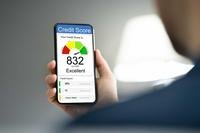As shopping online has soared, so have the number of cyber thieves trying to cheat you out of your money.
Through the first 11 months this year, complaints about not receiving merchandise or sellers misrepresenting products topped the list of Internet-related complaints fielded by the National Consumers League's fraud center. That doesn't include complaints about online auctions, which were a separate category.
"Unfortunately, there are scam artists and some less-than-honest retailers" lurking on the Internet trying to take advantage of unsuspecting buyers, said Susan Grant, director of consumer protection for the Consumer Federation of America.
Despite some pitfalls, shopping online continues to surge.
The biggest online shopping day ever was recorded on Nov. 29 this year, dubbed Cyber Monday, when U.S. consumers spent $1.03 billion, according to ComScore.com. That tally eclipsed the previous one-day record of $913 million set on Dec. 15, 2009.
From Nov. 1 through Dec. 10 this year, cyber shoppers have spent some $21.95 billion, up 12 percent from the same period last year, ComScore.com said.
With that much money at stake, the consumer's group offered these tips to avoid being swindled online:
** Check out unfamiliar sellers. Before you buy, check for complaints with the Better Business Bureau, www.bbb.org, and seller ratings on auction and price comparison sites. You also can get an idea about a business' complaint history at consumer gripe sites, such as My3cents.com, Complaints.com and Ripoffreport.com.
** Pay the safest way. Paying by credit card offers the extra protection of being able to dispute charges if the goods or services weren't delivered or were falsely described. Some payment services such as PayPal offer "buyer protection" in case something goes wrong. Learn how to qualify for the protection before using the service.
** Check for a secure browser. When you are asked to provide your account information, make sure that the URL window has changed from "http" to "shttp or https." The "s" indicates the site has a security feature that turns your account number into a code so no one else can read it. There also may be a symbol on the screen such as a padlock or key.
E-mail is not secure so never provide account numbers that way.
** Never use a money transfer service to pay someone you don't know. Crooks require payment using money transfer services such as Western Union or MoneyGram because they can get the cash fast and it's hard to trace. "It's just like putting cash in an envelope and sending it to a stranger," Grant said. For more about money transfers see the CFA's Buyer Beware video at www.consumerfed.org/fraud.
** Keep records of your purchases. Print out a copy of your order information and other documentation in case there are questions or problems.
** Beware of phishing and smishing scams. Identity thieves posing as legitimate companies send e-mails (phishing) and text messages (smishing) asking people to confirm account numbers and other personal information. But legitimate businesses don't ask for account information that way. Delete the e-mail or text and never click on a link from someone you don't know to avoid downloading a virus.











